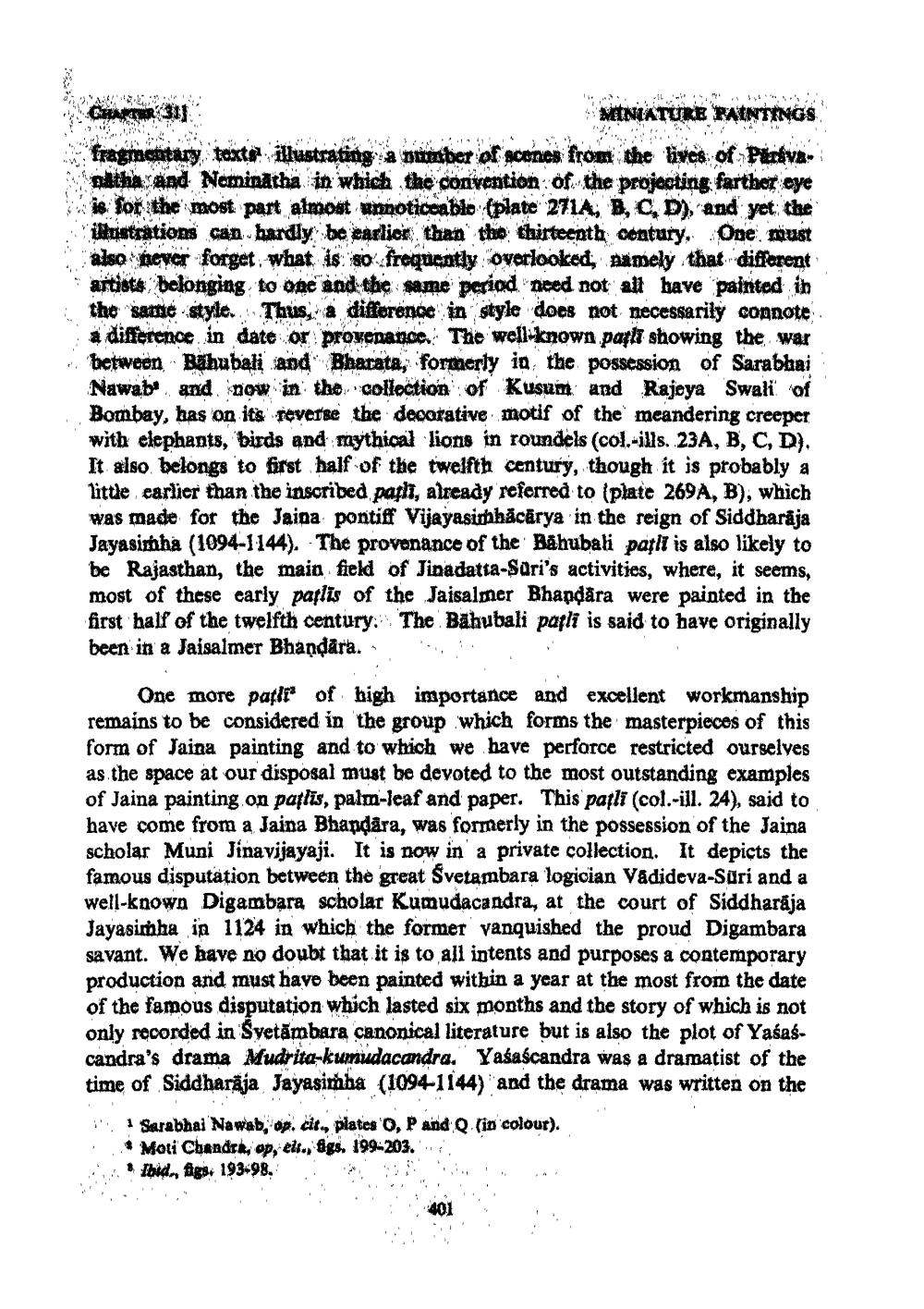________________
.
SINIATURE PAINTINGS fragmentary, texte illustrating a number of scene from the lives of Plakva nathasand Nominatha in which the convention of the projecting farther eye is for the most part almost amoticeablo (plate 271A, B, C, D), and yet the izietrations can hardly be earlier than the thirteenth century, One must also tever forget what is 180 frequently overlooked, namely that different artists belonging to one and the same period need not all have painted in the same style. Thus, a difference in style does not necessarily connote a difference in date or provenance. The well-known payt showing the war between Bahubali and Bharata, formerly in the possession of Sarabhai Nawabs and now in the collection of Kusum and Rajeya Swall of Bombay, has on its reverse the decorative motif of the meandering creeper with clephants, birds and mythical lions in roundels (col.-ills. 23A, B, C, D), It also belongs to first half of the twelfth century, though it is probably a little earlier than the inscribed paph, already referred to (plate 269A, B), which was made for the Jaipa pontiff Vijayasimhäcārya in the reign of Siddharaja Jayasimha (1094-1144). The provenance of the Bahubali parli is also likely to be Rajasthan, the main field of Jinadatta-Sari's activities, where, it seems, most of these early paflis of the Jaisalmer Bhapdāra were painted in the first half of the twelfth century. The Bahubali pafli is said to have originally been in a Jaisalmer Bhandara.
One more patir of high importance and excellent workmanship remains to be considered in the group which forms the masterpieces of this form of Jaina painting and to which we have perforce restricted ourselves as the space at our disposal must be devoted to the most outstanding examples of Jaina painting on paflis, palm-leaf and paper. This pafli (col.-ill. 24), said to have come from a Jaina Bhandara, was formerly in the possession of the Jaina scholar Muni Jina vijayaji. It is now in a private collection. It depicts the famous disputation between the great Svetambara logician Vadideva-Süri and a well-known Digambara scholar Kumudacandra, at the court of Siddharaja Jayasimha in 1124 in which the former vanquished the proud Digambara savant. We have no doubt that it is to all intents and purposes a contemporary production and must have been painted within a year at the most from the date of the famous disputation which lasted six months and the story of which is not only recorded in Svetāmbara canonical literature but is also the plot of Yasascandra's drama Mudrita-kumudacandra. Yašaścandra was a dramatist of the time of Siddharāja Jayasimha (1094-1144) and the drama was written on the
1 Sourabhai Nawab, op. cit., plates O, P and Q fin colour).
• Moti Chandra, op, els., figs. 199-203.... .:. fbido, flgs. 193-98.
i. in
401




